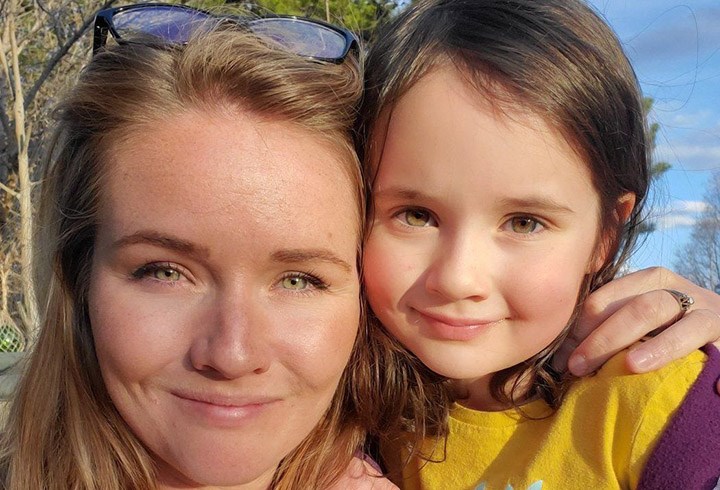B.C. schools will begin offering voluntary part-time, in-class instruction for students on June 1, a decision that was met with mixed reviews in one northern village.
“I would say a slight majority plan to keep their kids home,” said Jill Joslin, vice-chair of the Valemount Parent Advisory Council (PAC), whose feedback indicator so far was a PAC-moderated social media site for parents of Valemount Elementary School students.
When Joslin posted a notice about next week’s school restart, reaction was swift and varied. From, ‘Absolutely not, it’s too soon,’ to, ‘That’s okay for those who need to,’ said Joslin, whose own two children began attending school last week. Both she and her husband are essential service workers.
“It's different for everybody,” she said, explaining she and her husband wanted greater normalcy for their family. “For us, that means some sort of routine and socialization.”
B.C. school re-openings are part of an over-arching provincial economic recovery plan to re-start sectors which stalled during the pandemic.
“We put schools last in phase two of the restart plan for a reason,” said Education Minister Rob Fleming. “We wanted to keep our eye on what's happening, and here in British Columbia, we’re seeing very encouraging news.”
New cases have mostly hovered below 20, and sometimes 10, for much of May, and hospitalization rates are in steady decline. Of the 2,400-plus people with lab-confirmed COVID-19 in B.C., only 67 were children. The majority of whom have recovered, and the last few, very nearly so.
“I think we're really reassured by the fact that we've had so few actual (children's) cases in BC,” said Dr. Trevor Corneil, vice president of population health and medical lead in the Office of the Provincial Health Office.
Add to that, 5,000 students – children of essential workers and students with high learning needs – have attended schools across the province for the past five weeks with no outbreaks. Opening schools to the wider student body builds on that success. What’s unclear, is how many students will attend.
“What we've seen in Denmark and New Zealand… is that more of them come back as they begin to feel safe,” Fleming said in a virtual townhall last week. “All of us as British Columbians are just starting to get used to the new normal.”
In School District 57 (Prince George), for the month of June, that normal will include two days a week of in-class instruction for students in kindergarten through grade five, and one day at school for students grades six to 12, with one day of distance-learning for all students. Under physical distancing guidelines, attendance can’t exceed 50 per cent in the lower grades and 20 per cent for older students.
While district teachers have been instructed by district administrators to return to schools unless they obtain permission otherwise, parents can opt in or out.
“My sense is, the primary motivation for those parents who don't feel comfortable sending their children is because of the perceived risk of transmission,” said Joslin.
“We've moved in this direction, because the provincial health office has said it's safe to do so,” said Stephanie Higginson, chair of the B.C. School Trustees Association, during the townhall meeting featuring Fleming. “Because we know it's the right decision for students.”
“One big thing we learned, is the virus that causes COVID-19 impacts children in a different way than it does adults, said Corneil. “Although many of the viruses that we are used to, influenza and some of the cold viruses, do impact children and are spread by children, this one is different, that's what's unique and what we're learning as we go.”
A study in China whose results were published in Pediatrics medical journal, indicated of the more than 2,000 children who had confirmed or suspected COVID-19 during the country’s recent outbreak, 94 per cent experienced asymptomatic, mild or moderate symptoms.
The controlled school environment with strict health and safety protocols and a close-to-zero community spread are also integral. As long as diligent surface cleaning is done, and hand, personal hygiene and social distancing protocols are followed, the return to school will be as safe as it can be, said Corneil.
“If all of those things are put into place, we know that the risk is very, very low for children,” he said.
Cleaning protocols stipulate schools must get a deep clean once a day and high-touch surfaces cleaned twice a day.
Most important is that students and staff don’t go to school sick, which is when the virus is most transmissible, Corneil said. Schools will have to have checks in place to ensure people don't attend school while sick.
Some parents worry their children will suffer emotional damage in a learning environment with such strict health protocols.
“Our kids over the last six to eight weeks have already been learning all of this social distancing and hand washing,” said Higginson, the mother of two elementary school children. “I think it would make them feel a little bit odd to be running into the school and thinking that they could do things normally.”
For Joslin, the benefits outweigh the potential risks. Initially, her kids were dreading a return to school, but they’ve returned home each day enthusiastic and brimming with news.
“They were doing robotics and computing, coding work,” said Joslin. “It was great.”


